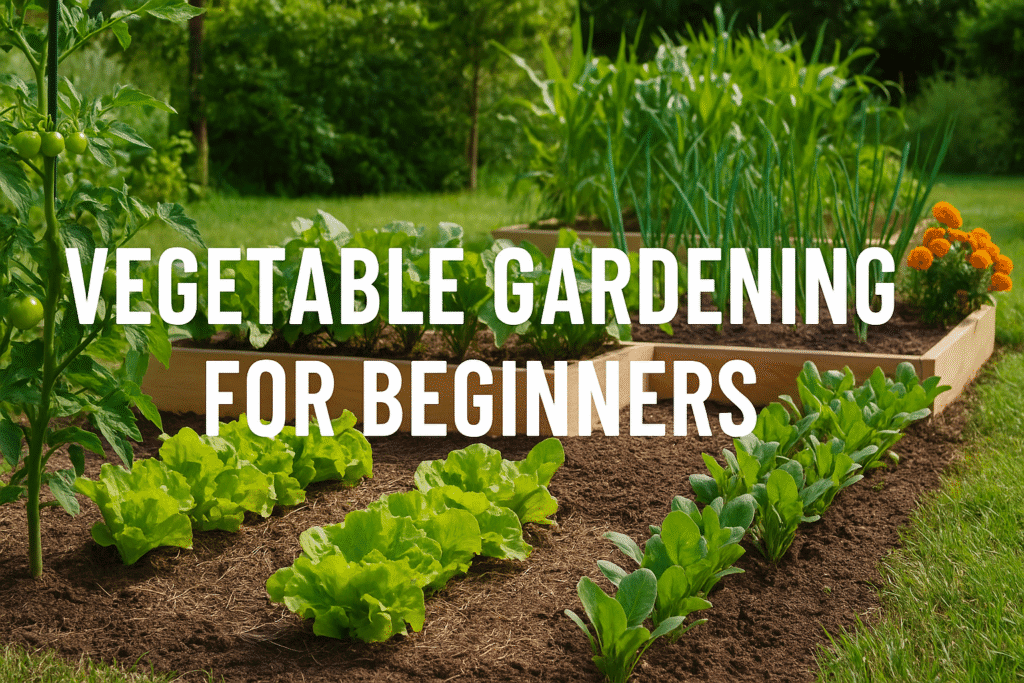How to Start Vegetable Gardening for Beginners at Home: Tips, Ideas, and a Complete Guide
Introduction
Starting a vegetable garden at home is one of the most rewarding and sustainable hobbies you can pursue. Whether you have a backyard, a balcony, or just a few containers, growing your food not only saves money but also ensures freshness, nutrition, and a sense of accomplishment. For beginners, vegetable gardening may seem overwhelming, but with the right knowledge and a little patience, anyone can grow a thriving garden right at home. In this comprehensive guide, we’ll walk you through everything — from selecting the right location and preparing the soil to choosing easy-to-grow vegetables, planning your layout, and maintaining your garden throughout the season. Let’s turn your green dreams into a flavorful reality.
Benefits of Growing Your Own Vegetables
Growing your own vegetables offers numerous benefits for your health, wallet, and well-being. Homegrown produce is fresher, more nutritious, and free from harmful chemicals. It saves money on grocery bills and reduces your carbon footprint by cutting down on transportation and packaging. Gardening also encourages physical activity and reduces stress, promoting mental wellness. It’s a rewarding way to reconnect with nature and enjoy seasonal foods. Plus, it teaches valuable skills and can be a fun, educational activity for the whole family. Whether in a backyard or on a balcony, growing your own vegetables brings satisfaction and sustainability right to your doorstep.
Easy to Grow Vegetables
- Tomato: Tomatoes are one of the most popular and versatile vegetables to grow at home. Rich in vitamins A and C, they thrive in full sun and well-drained soil. With proper care, tomato plants yield juicy fruits perfect for salads, sauces, and cooking, making them a must-have in every vegetable garden.
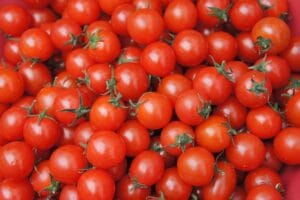
- Lettuce: Lettuce is a fast-growing, cool-season leafy vegetable perfect for beginner gardeners. It thrives in containers or garden beds and matures in just 30–45 days. With varieties like romaine, butterhead, and loose-leaf, lettuce offers fresh, crisp greens ideal for salads. Regular harvesting encourages continuous growth and a better yield.
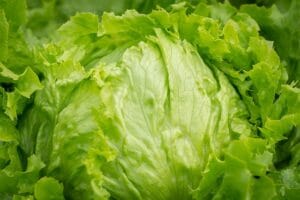
- Spinach: Spinach is a fast-growing, cool-season leafy green rich in iron, vitamins A and C, and antioxidants. It thrives in containers or garden beds with well-drained soil and partial to full sun. Spinach is easy to grow, harvests quickly, and is perfect for salads, smoothies, or cooked dishes.
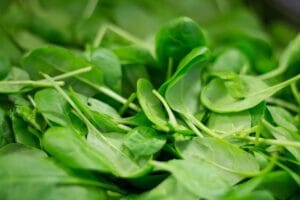
- Radish: Radish is a fast-growing, cool-season root vegetable perfect for beginner gardeners. It thrives in loose, well-drained soil and can be harvested within 3–4 weeks. Radishes are rich in vitamin C and add a crisp, peppery flavor to salads. They’re also excellent for container gardening and companion planting.
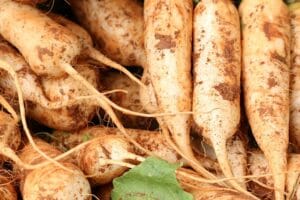
- Peppers: Peppers are versatile, colorful vegetables that thrive in warm, sunny spots. They come in various types, including sweet bell peppers and spicy chili varieties. Rich in vitamins A and C, peppers are easy to grow in pots or garden beds. Regular watering and full sun ensure a healthy, flavorful harvest.
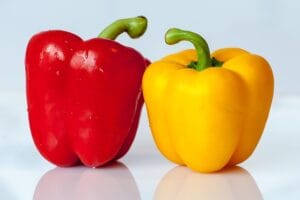
- Carrots: Carrots are a popular root vegetable known for their sweet, crunchy texture and rich orange color. Packed with beta-carotene, fiber, and vitamins, they’re great for eye health and digestion. Carrots grow best in loose, sandy soil and cool climates, making them ideal for beginner gardeners and home vegetable gardens.
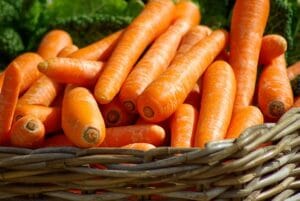
Plan Your Garden Layout
- Use raised beds for better drainage and weed control
- Consider square foot gardening for small spaces
- Group plants by height and sunlight needs
- Leave space for pathways and air circulation
Layout Tip: Taller plants (like tomatoes) go on the north side to avoid shading shorter crops.
Preparing the soil
Preparing the soil is the foundation of a healthy vegetable garden. Start by clearing the area of weeds, rocks, and debris. Loosen the soil 6–12 inches deep using a shovel or garden fork to improve drainage and root growth. Mix in organic matter like compost, aged manure, or peat moss to boost fertility and structure. Check the soil’s pH—most vegetables prefer slightly acidic to neutral soil (pH 6.0–7.0). Good soil should be crumbly, well-drained, and rich in nutrients. For container gardening, always use high-quality potting mix designed for vegetables, not regular garden soil. Healthy soil means thriving plants and bigger harvests.
Buy Quality Seeds or Seedlings
When starting a vegetable garden, buying quality seeds or seedlings is essential for success. High-quality seeds have better germination rates, stronger resistance to diseases, and produce healthier plants. Choose seeds from reputable suppliers and look for non-GMO, organic, or heirloom varieties suited to your climate. If you’re a beginner, consider starting with seedlings, especially for tomatoes, peppers, or herbs, as they are easier to transplant and establish quickly. Always check the seed packet or label for important information like planting depth, sunlight needs, and harvest time. Investing in good seeds ensures a productive, healthy garden with bountiful harvests.
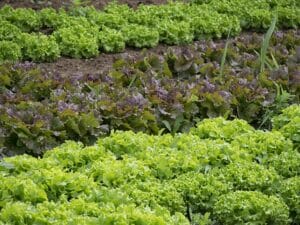
Watering
Watering is essential for healthy vegetable growth. Most vegetables need about 1–2 inches of water per week. Water deeply at the base of plants early in the morning to reduce evaporation and prevent diseases. Avoid overhead watering, which can lead to fungal issues. In containers, check moisture daily, as they dry out faster than garden soil.
Mulching
Mulching is the process of covering soil with organic or inorganic material to retain moisture, suppress weeds, and regulate soil temperature. Common mulch types include straw, leaves, wood chips, and compost. It improves soil health over time, reduces water evaporation, and protects plant roots. For vegetable gardens, mulching is essential to promote healthy growth and reduce maintenance.
Fertilizing Your Garden
Fertilizing your vegetable garden is essential for healthy plant growth and bountiful harvests. Begin by using organic compost or well-balanced fertilizers like 10-10-10 to enrich the soil with nitrogen, phosphorus, and potassium. Apply slow-release fertilizer at the start of the growing season, and follow up every few weeks with compost tea or liquid organic feeds. Always water after fertilizing to help nutrients reach the roots. Avoid over-fertilizing, as it can lead to excessive leafy growth with fewer vegetables. Test your soil yearly to know what nutrients are needed. Healthy, nourished soil leads to strong, productive plants throughout the season.
Pest & Disease Management
Effective pest and disease management is essential for a healthy vegetable garden. Begin by inspecting plants regularly for common pests like aphids, caterpillars, or beetles. Remove affected leaves or insects by hand when possible. Use natural solutions such as neem oil, insecticidal soap, or homemade garlic spray to control infestations. To prevent fungal diseases, avoid overhead watering and ensure good air circulation. Rotate crops each season and keep the garden free from weeds and debris that can harbor pests. Attract beneficial insects like ladybugs and lacewings by planting companion flowers such as marigolds and nasturtiums nearby.
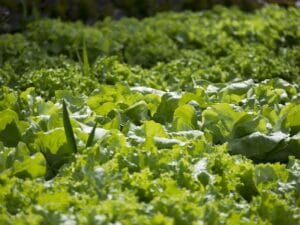
How to Harvest a Vegetable Garden
Harvesting a vegetable garden is a rewarding step in the gardening journey. Begin by checking vegetables daily for ripeness—look for full color, firmness, and size based on the variety. Use clean, sharp scissors or pruners to avoid damaging the plant. Pick leafy greens and herbs early in the morning for the best flavor. Regular harvesting encourages continuous production, especially in crops like beans and cucumbers. Avoid letting vegetables over-ripen, as this can reduce plant yield and taste. Handle produce gently to prevent bruising. After harvesting, wash and store vegetables properly to maintain freshness and enjoy the fruits of your labor.
Vegetable Gardening Ideas for Small Spaces
- Vertical Gardening: Use wall planters, trellises, or hanging baskets
- Grow Bags: Perfect for potatoes, tomatoes, or peppers
- Window Boxes: Ideal for herbs and leafy greens
- DIY Pallet Gardens: Great for lettuce, spinach, or radish
What do you mean by vegetable gardening
Vegetable gardening involves selecting a site, planning the garden, preparing the soil, choosing the seeds and plants, planting the crop, and nurturing the plants until they are ready for harvest. The result is fresh produce that can be eaten, shared, or sold.
FAQ
Q: When is the best time to start a vegetable garden in the USA?
A: Spring (March–May) is ideal, but it depends on your USDA hardiness zone.
Q: What vegetables grow well in containers on patios or balconies?
A: Tomatoes, peppers, lettuce, spinach, and herbs grow great in containers.
Q: How do I know my vegetables are ready to harvest?
A: Check for color, size, and texture based on each vegetable’s maturity guide.
Q: What’s the easiest vegetable to grow for beginners?
A: Radishes, green beans, and lettuce are beginner-friendly and fast-growing.
Q: How much sunlight does a vegetable garden need?
A: Most vegetables need at least 6–8 hours of direct sunlight per day.
Q: Can I grow vegetables during the winter in the USA?
A: Yes, in southern states or using indoor setups like grow lights or greenhouses.
Q: What’s the best soil for vegetable gardening?
A: Well-draining, loamy soil enriched with compost works best.
Q: How often should I water my vegetable garden?
A: About 1 inch per week; containers may need watering daily in summer.
Q: Are raised beds better than traditional garden beds?
A: Yes, they offer better drainage, fewer weeds, and are easier to manage.
Q: Where can I buy good-quality seeds in the USA?
A: Try online stores like Burpee, Baker Creek, or your local garden centers.
Conclusion
Starting a vegetable garden at home may seem like a big step, but with a little planning, patience, and care, it’s easier than you think. Whether you’re growing tomatoes on your balcony or cultivating a full backyard garden, the joy of harvesting your fresh produce is unmatched. It’s not just about saving money — it’s about eating healthier, connecting with nature, and finding peace in the process. So don’t wait for the “perfect time” — grab a few pots, some seeds, and start growing. Your future garden — and your dinner plate — will thank you!

